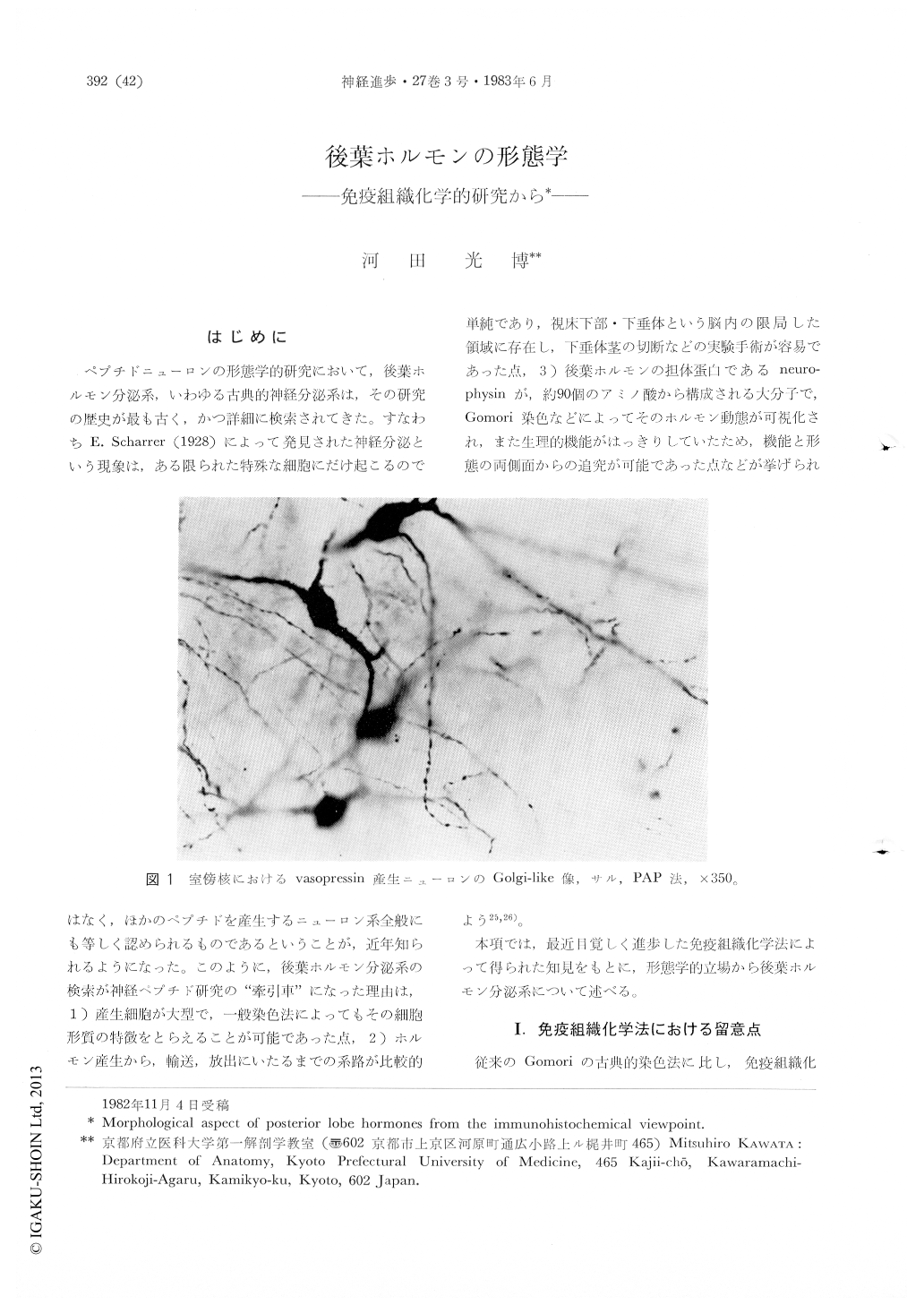Japanese
English
- 有料閲覧
- Abstract 文献概要
- 1ページ目 Look Inside
はじめに
ペプチドニューロンの形態学的研究において,後葉ホルモン分泌系,いわゆる古典的神経分泌系は,その研究の歴史が最も古く,かつ詳細に検索されてきた,すなわちE. Scharrer(1928)によって発見された神経分泌という現象は,ある限られた特殊な細胞にだけ起こるのではなく,ほかのペプチドを産生するニューロン系全般にも等しく認められるものであるということが,近年知られるようになった。このように,後葉ホルモン分泌系の検索が神経ペプチド研究の"牽引車"になった理由は,1)産生釧胞が大型で,一般染色法によってもその細胞形質の特徴をとらえることが可能であった点,2)ホルモン産生から,輸送,放出にいたるまでの系路が比較的単純であり,視床下部・下垂体という脳内の限局した領域に存在し,下垂体茎の切断などの実験手術が容易であった点,3)後葉ホルモンの担体蛋白であるncurophysinが,約90個のアミノ酸から構成される大分子で,Gomori染色などによってそのホルモン動態が可視化され,また生理的機能がはっきりしていたため,機能と形態の両側面からの追究が可能であった点などが挙げられよう25,26)。
本項では,最近目覚しく進歩した免疫組織化学法によって得られた知見をもとに,形態学的立場から後葉ホルモン分泌系について述べる。
With the advent of immunohistochemistry, the classical neurosecretory cells which are stainable with Gomori's method have come to be classified as oxytocin and vasopressin neurons. Magnocellular oxytocin and vasopressin neurons are mainly distributed in the paraventricular and supraoptic nuclei. In these nuclei, both types of neurons are intermingled each other, although the preferential distributional patterns and the ratio of these cells are species-dependent. In almost all mammals, vasopressin neurons predominate in the supraoptic nucleus, while oxytocin neurons predominate in the paraventricular nucleus.

Copyright © 1983, Igaku-Shoin Ltd. All rights reserved.


